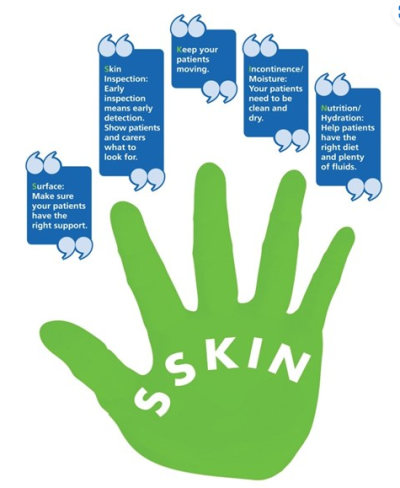Infection prevention and control
Pressure ulcers: Advice for patients and carers
We are committed to preventing pressure ulcers and helping local patients, families or carers to manage pressure ulcers more effectively.Pressure ulcers result in a marked reduction of quality of life for patients and can be painful and hard to heal. This creates significant difficulties for patients, as well as their families and carers.This page contains information for carers and patients on how to help prevent pressure ulcers. Carers play a vital role in preventing pressure ulcers - as people who have frequent contact with the individual at risk - and so it is important they are aware of how they can help reduce and prevent pressure ulcers from occurring.
What is a pressure ulcer?
The facts about pressure ulcers:
- Pressure ulcers can occur within a matter of hours for those at risk
- Regular top to toe skin inspections are needed to help prevent pressure ulcers occurring. Look out for reddening that does not subside over bony areas.
- Use the blanching / non-blanching technique to test for early pressure damage (see signs to watch out for below to demonstrate this simple technique)
- Pressure ulcers in the NHS cost between £1.4 and £2.1 billion per year
- A large amount of pressure ulcers are avoidable
Risk factors include:
-
Poor mobility - sitting or lying in one position for extended periods of time
-
Poor nutrition or hydration
-
Wheelchair users
-
Incontinence
Tissue Viability Service: Find out more about our tissue viability service across Richmond

Look out for red areas over bony prominences and take pressure off area:
A reddened area over sacrum
Non-blanching area - demonstrating early stage pressure damage
Please note: The darker the skin, the harder pressure ulcers will be to detect. In darker skin, feel for hardness or heat around the affected area.